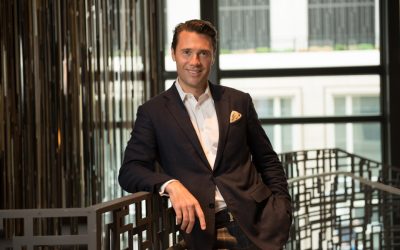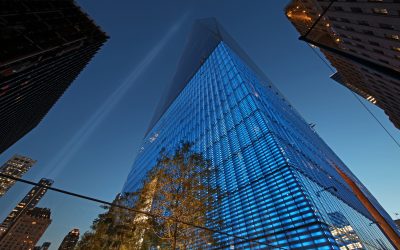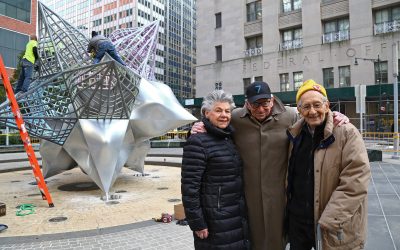There is no question that Iman has changed the face of beauty in the world.
When she arrived in New York in the creative and crazy days of the “Me
Decade” in 1975, she was a highly educated daughter of Somalian aristocracy who not only immediately assimilated into the rich culture and art scene, she helped define it. “When I arrived in America, this was an amazing period in New York,” said the stunning supermodel who has made NoLiTa her home with her husband, cultural icon David Bowie, for 15 years. “I was provided some amazing opportunities, took advantage
of them and was able to make some significant changes myself.”
Possibly the most important model of color in history, the statuesque African beauty
had been a political science major in her home country—where her father was a diplomat
and ambassador to Saudi Arabia—when she was discovered by legendary American fashion photographer, Peter Beard. “I had never seen a fashion magazine when he approached me,” she said. “I didn’t even know there was such a business as fashion.”
However, all of that would change faster than she could imagine. Her first modeling assignment would come just a year later for a fashion publication no less vaunted than Vogue itself. “Suddenly I was in the middle of the industry, and they weren’t ready for me.”
The experience on her first shoot would help define both her modeling career and the many personal and professional accomplishments she’s had since. “I went to the job, and the makeup artist asked me if I had brought my own foundation, and that was very perplexing to me,” she said. “I had no idea what he was talking about. He didn’t say anything like that to the other model who was white, so I knew there was something different about me.”
The photographer had the makeup artist mix up some foundation for Iman from an array of makeup that he had on the shoot. “He put it on me, and I looked absolutely gray!” she said with the same horror she experienced nearly 40 years ago. “And so the next day, I went and found anything I could find in the store that would match my tone, and I started mixing and matching. And I did it right.”
The result was she created a masterpiece of beauty that launched her modeling career and her awareness that she could make a difference.
“From that point on, I was getting big jobs and really found a niche for myself,” she said. “But I knew that I was still being treated differently because of my color. I found out that I was making less than white models, and I wasn’t
going to stand for that.”
Iman demanded to be paid equally and then some… and she got what she wanted, as she normally is able to do.
“My approach was totally different from all the other girls,” she said. “That was because modeling wasn’t my everything. I didn’t live for it like the other girls. I always knew that I could walk away from it, so I wasn’t afraid to speak my mind. And it wasn’t until then that I realized how much of an influence that I could have.”
Today, women of all backgrounds are paid on an equal scale, and they can thank her for blazing a trail. From then on, Iman made it a point not only to ensure that she took care of herself, but that she was a representative for all models of color. “I needed to use my successes to pave the way for other women of color, and obviously, it is a different world today,” she said.
The impact was even more profound, because her successes were so abundant. Iman became the muse for many of the top fashion photographers in the world, including Richard Avedon, Helmut Newton and Annie Leibovitz. Along the way, Iman Mohamed Abdulmajid, the unknown girl from a continent far away, became Iman, one of the most famous and iconic names in the fashion industry and beyond.
“It was a very heady time for me,” she said. “Suddenly I was thrust into the limelight and partying with Andy Warhol and Miles Davis, and just months before, I didn’t even know who they were. I soaked up everything the limelight had to offer.”
Iman soared to the forefront of consciousness in the pop culture scene. She was seen at Studio 54, meeting other celebrities and making tons of money—a fact that allowed her to help her family escape the political turbulence of her home country at the time. “It did two things: one, it empowered me with the belief that I could do anything,” she said. “Let’s not forget that my parents became overnight refugees. My brothers and sisters could not afford to finish school, and immediately I could pay for all of that. That meant a lot to me, much more than modeling itself.”
Now 58, she said she was intoxicated by fame but never lost sight that it could be fleeting. “You feel great about yourself; you think, ‘Yes, I am the hottest thing going on!’ And then Cindy Crawford walks in the door. We all learn that. There is always a better looking girl around the corner.”
Despite her humility, Iman went on to build a career that rivaled or surpassed any supermodel of her era or any other. When she hung up her pumps in 1989, she knew that her successes were far from over.
Based on her own experiences and the makeup creations she created for herself, she launched Iman Cosmetics in 1994, creating formulas that addressed the wide spectrum of shades for women of different ethnic origins. Twenty years later, the brand earns approximately
$25 million each year.
“I’m hoping that my beauty line will become my legacy,” she said. “This is something that was created for the need of one and now addresses the needs of many. It means so much to me when women of color approach me and tell me how much this brand means to them. What’s really great are the women who tell me that their daughters wear it, as well. That means the world to me.”
As if her impact wasn’t profound enough, she has also branched out into other successful business ventures that bring real benefit to women. In 2007, she brought the world Global Chic, a collection of classically inspired designs for women who don’t fit into the classic sizes.
“The clothing line is performing beyond my expectations. I started it six years ago, and now it’s the second best seller on HSN [Home Shopping Network],” she said with pride, explaining that she was approached by the network’s CEO, Mindy Grossman, to launch the designs for larger women inspired by her cultural and classical sensibilities.
“By no means am I a fashion designer,” she said of her role in addressing the under-served needs of the plus-sized woman seeking classic options in clothing. “It’s more like I’m a great stylist. I recognize classic quality, because my perception of fashion is classic. I don’t look at barriers of race or economy. I embrace designs with staying power. I don’t follow trends.”
Iman’s real motivation was to provide elegant options for bigger women, who are actually considered the norm rather than the exception. “Designers do not make clothing for plus-size women,” she said. “But let’s face it, a regular American girl is a 14. I wanted to create something which I like to call a ‘fashion democracy,’ which means clothing that looks stylish and good on you whether you’re a size 4 or 20.”
The results have been huge. Today, the Global Chic collection is one of four best-selling brands on HSN. “Women love it,” she said. “That’s because they can’t find this kind of classic styling in their sizes anywhere else. They’re truly grateful to have this kind of quality and elegance available to them and at reasonable pricing. All of that means a great deal to me.”
Something that also means a great deal to Iman is the Downtown area that has become her American hometown. “I never felt like a true American until I moved here with my husband,” she said. “We used to live on Central Park West, and it was very nice, but my husband wanted to be here where there is such a strong connection to the arts. There is a sense of neighborhood here that you can’t find anywhere else in the city.”–
That community feeling was deeply reinforced when the couple and their child went through the terrifying, but ultimately triumphant, horror of the attacks on the World Trade Center. “There was a fire station near our apartment, and every day they would stop us and say hello and ask about the baby,” she recalled. “I always thought they would be there to watch her grow up. And then 9/11 happened, and almost all of them were killed. We felt that as a family we were robbed of these men. I felt like I lost a part of me.”
Iman described the sense of trauma her family felt for and with her neighbors, but also the bonding that occurred as a result. “I don’t know how long all of us were in a daze after that, and while the impact was severe, I felt a real sense of common purpose develop, along with a commitment to each other that I had never felt before… anywhere,” she said. “I had lived in the United States for a long time before that, but that was when I first felt like an American.”
She talked about the importance of that commitment to others and how it has motivated her to support two charities that give her yet another opportunity to give back in a significant way that is meaningful to her. “The two charities I’m most involved in involve women, and both are based in Africa,” she said. “The first is the Dr. Hawa Abdi Foundation for the work that Somalian woman are doing for the children of the country. She is like Mother Teresa and Rambo rolled into one. Since the country has no real government, the kids have been without education and proper healthcare since 1994. [Dr. Hawa Abdi] has built a hospital and a school complex, and we help get the equipment and supplies she needs to do the job.”
Iman’s other charity is also intended to bring relief to other oppressed people in another troubled African nation. “It is called Raise Hope for Congo, and it is an effort to get major corporations and countries to stop dealing with the corrupt, violent and oppressive government to obtain essential minerals and to trade with conflict-free alternatives in other countries.”
So whether it’s halfway around the world or across the beauty and fashion industries, Iman has made a difference because she’s made a connection with all of the people she has come in contact with.
She may have changed the face of beauty with her brains, but she has also had a hand in making many other things a great deal better with her heart.
-by Mike Hammer













